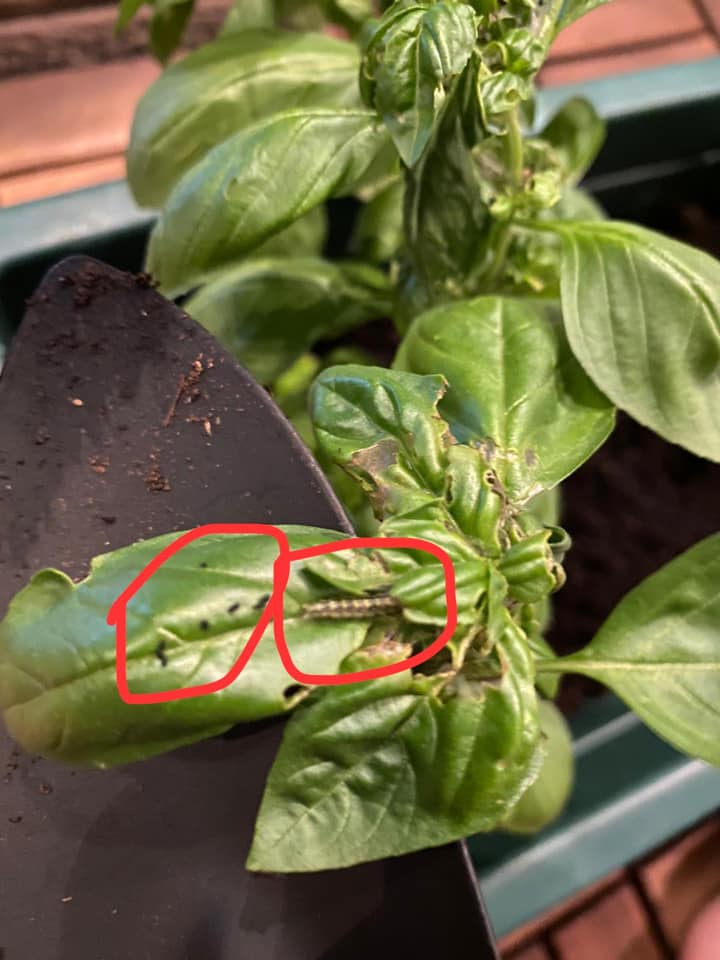Basil leaves turning white, black, brown & yellow is not a color tantrum shown by the plant but rather a sign of despair!
When you plant Basil in early spring, you must maintain the ideal growing conditions to harvest healthy foliage in summer.
So, this article covers every detail of the reasons behind problems in Basil leaves with failproof treatments and preventive measures.
Why Is My Basil Leaves Turning White, Black, Brown & Yellow?
Excessive pesticidal application and using the DIY spray containing high soap content may result in burnt and browning leaves in Basil.
So, you must know the symptoms and appropriate reasons behind the leaf problems to treat them in time.
1. Improper Watering
Overwatering and underwatering are the major causes behind your Basil leaves turning white, black, brown, and yellow.
Overwatering causes soggy soil inviting many soil problems like pathogens causing the plant to suffer from root rot.

Moreover, underwatering may dehydrate the plant causing stress on your Basil. You will notice the effect first on the leaves.
Even if you water properly, bad water quality from tap water may also be the reason behind your Basil leaves turning white, black, brown, and yellow.
Treatments And Preventive Measures
- Water your Basil plant only when the top 2 inches of the soil feels dry.
- Basil needs watering every three days during summer and weekly during winter.
- Avoid overhead watering and water only on the base of the plant.
- Always use distilled or filtered water to hydrate your Basil plant.
- Use a moisture meter for proper watering.
2. Temperature Issues
Basil plants love warm temperatures, and exposure to freezing cold may result in leaf spots and leaves turning black.
However, too hot a temperature may also cause leaves to burn, and the symptom starts from yellow leaves.
Provide Basil a temperature of 80-90ºF to maintain its lush and healthy foliage.
Treatments And Preventive Measures
- Change the location towards north facing window during cold days.
- Relocate the plant to a shaded place during the hottest days.
- While growing indoors, protect your Basil from coolers, heating vents, etc.
- Mulch around the plant’s base to retain moisture and maintain temperature.
- Use a frost blanket to protect the plant from chilling cold during winter.
3. Incorrect Sunlight
Sunlight is vital for Basil’s growth, but sunlight beyond limitation may harm your Basil plant.
Moreover, high sunlight may also burn and dehydrate the plant causing dry soil. This may also be the reason behind Basil’s leaves turning brown.

Additionally, lack of light deprives plants of making their food, and excessive light damages the photosynthetic tissue.
Basically, Basil plants need 6-8 hours of direct sunlight daily for proper and healthy growth.
Treatments And Preventive Measures
- Place your Basil plants near an east-facing window for good morning sun.
- Provide 14-16 hours of artificial light if natural light isn’t available.
- If the plant is facing excessive light, sheer curtains will help provide dappled light.
- Reflective mulch will provide a dual function of providing light and moisture retention.
- Use a UV protection shield to protect plants from harmful sun radiation.
4. Fertilizer Problems
Nutrition like nitrogen, phosphorous, and potassium are vital for Basil, but excessive use may burn the plant’s foliage.
Moreover, lack of nutrition may cause stunted growth in the Basil plant, causing various leaf problems.
If you deprive your basil plants of nutrients, they will also be susceptible to many diseases causing leaf problems.
If you apply liquid fertilizer from the top of the plant, leaf burn will occur, causing black, brown, and white spots on basil leaves.
Basil plants will need balanced fertilizers every 4-6 weeks during the growing season.
Treatments And Preventive Measures
- Only apply fertilizer at the base of the plant instead of applying from the top.
- Hydrate the plant before applying fertilizer.
- Amend the soil with organic compost to avoid chemicals.
- Prune the leaves with fertilizer damage, as they won’t revive.
5. Soil And Drainage
Even if you take care of all the optimal conditions, Basil will still face leaf problems if it’s in compact soil.
Also, the Basil plant can’t take the right nutrients properly on excessive compact soil.
For healthy, lush foliage, the Basil plant will need well-draining soil with a pH of 6.5-7.
Treatments And Preventive Measures
- Grow Basils in terracotta pots with enough drainage holes.
- Mix perlite or sand in the compact soil to make it well-draining.
- Add vermicompost to increase the soil aeration and make the soil fertile.
- Avoid using excessive fertilizer as it accumulates salt contents, making soil infertile.
- Provide proper spacing and avoid grouping the plants too closely.
6. Pests And Pathogens
Pests and pathogens are also the major causes behind several leaf problems in the Basil plant as they feed on the leaves.
Basils are susceptible to pests like slugs, mealybugs, aphids, spider mites, thrips, and many more.

These pests not only suck sap from the leaves, but also spread several fungal and bacterial pathogens.
Moreover, fungal disease like powdery mildew may cause white leaves on Basil that is highly spreading.
Treatments And Preventive Measures
- Isolate the affected plant and prune the infected parts.
- Discard the severely infected plant to avoid the risk of spread.
- Use pesticides and fungicides weekly to prevent pest and pathogenic invasion.
- For the chemical-free option, use neem oil weekly.
- The biological control method will be an environmental-friendly option to eliminate pests.
From Editorial Team
More Tips!
Sometimes, you may see your Basil plant turning black, with the leaves falling and drooping. This may be due to the dying plant.
Basil is an annual plant that lives for 6-8 months and dies after the first frost appears. Thus, plants turning black may be due to their completed lifespan.


